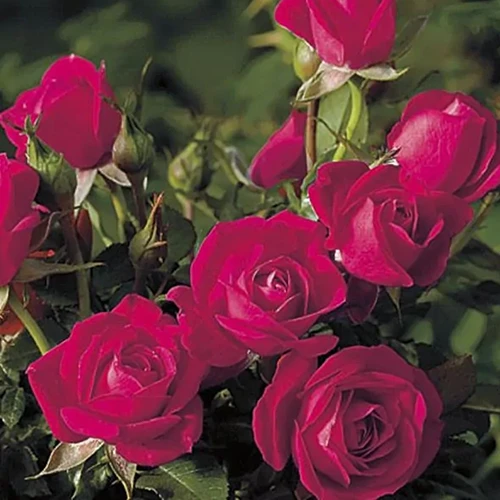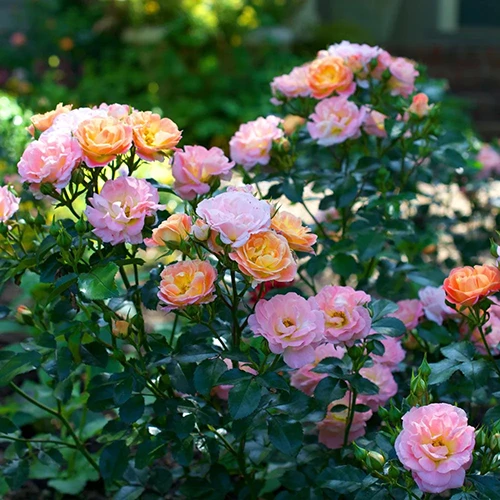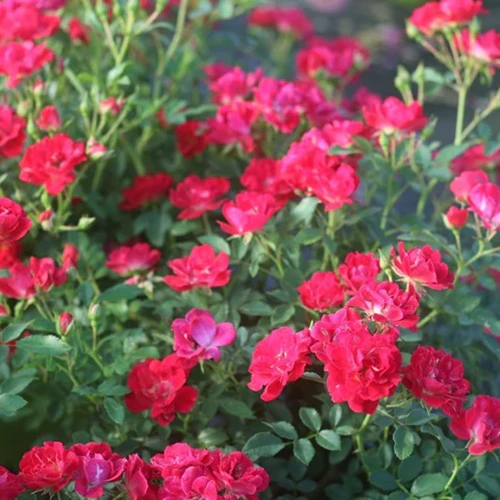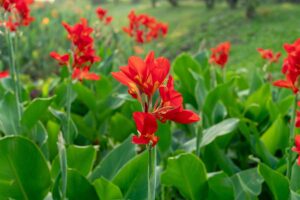Listen, I adore roses, but even I can admit that categorizing these plants has gotten a little bit, shall we say, confusing.
I mean, a “shrub” is a group classification, but all roses are botanically shrubs as well. Then there are miniature and miniflora types.
They’re both small, and a breeder who hybridizes a tiny plant can choose which category they want to stick their new plant in.
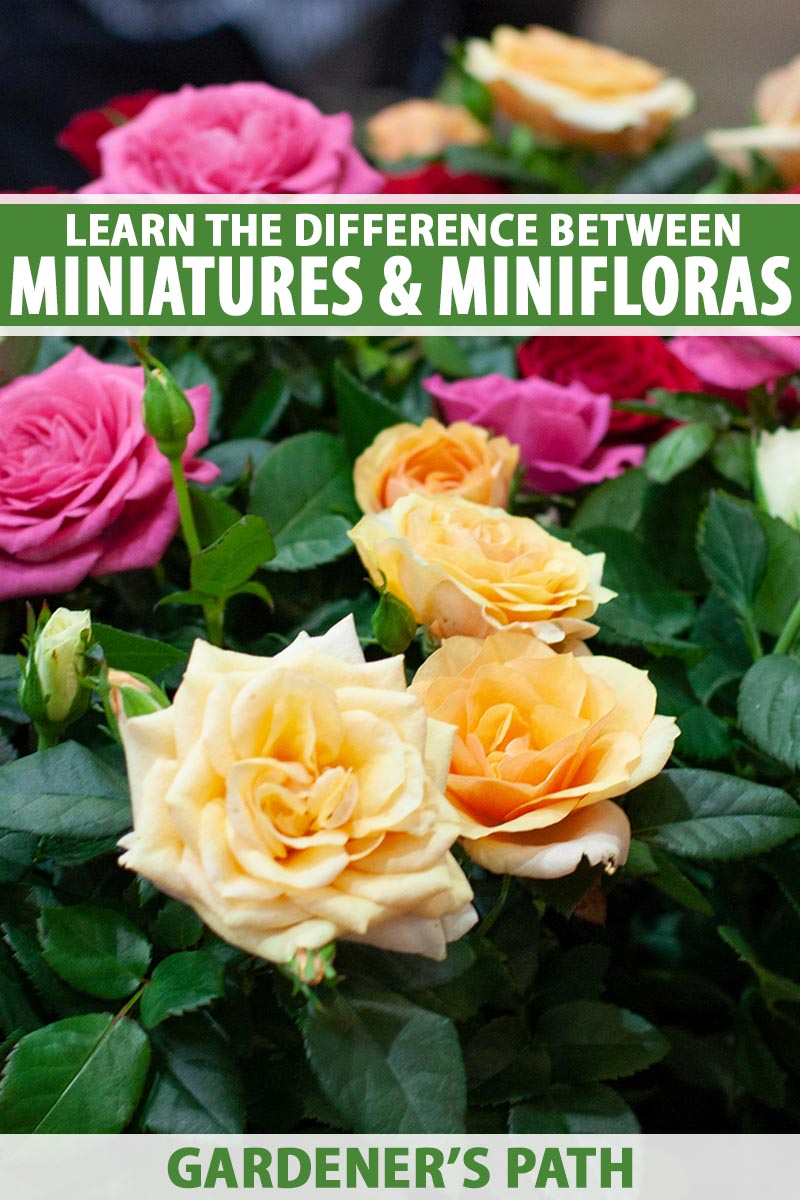
We link to vendors to help you find relevant products. If you buy from one of our links, we may earn a commission.
That means the same 12-inch-tall plant that a breeder just created could be described as a mini, miniflora, or a shrub, depending on what the breeder picks.
You can see why there’s some confusion surrounding this.
It helps to have labels to understand exactly what it is we are talking about when we discuss roses.
If you’re out shopping for a particular plant and you hope to find something that is about 16 inches tall with full-sized blossoms, you’re going to want to ask for a miniflora rather than a miniature plant when you talk to the salesperson.
So, what’s the deal with miniflora and miniature roses? What sets them apart? What similarities do they share?
We’re going to explain everything in just a minute. Up ahead, here’s what we’ll discuss to make the difference between these two types of petite roses crystal clear:
What You’ll Learn
Rose classifications around the globe are determined by the American Rose Society (ARS).
They oversee classifications and registrations, so when we say a certain name or term pertaining to roses is classified, we mean the ARS has done so.
But of course, not everyone gardens by the book. Sometimes we use slang or common terms that aren’t officially recognized by the ARS.

Someone might call a tiny rose “miniature” even if it isn’t technically defined as one by this professional organization.
That’s why the ARS has set some guidelines and keeps track of all the registered plant classifications. Both can be climbers or shrubs in growth habit.
Whichever type you decide to grow, these have the same requirements as standard plants. I know it’s tempting, especially since they are sold in some grocery stores as houseplants, but these should never be kept indoors full-time, even the teeny-tiny ones.
What Is a Miniature Rose?
A miniature is just what it sounds like: a plant that has been bred to stay smaller than the average shrub.
These shrubs generally stay under 30 inches tall, and the leaves and blossoms are proportionally small as well. These are the original tiny roses and they have been cultivated for centuries.
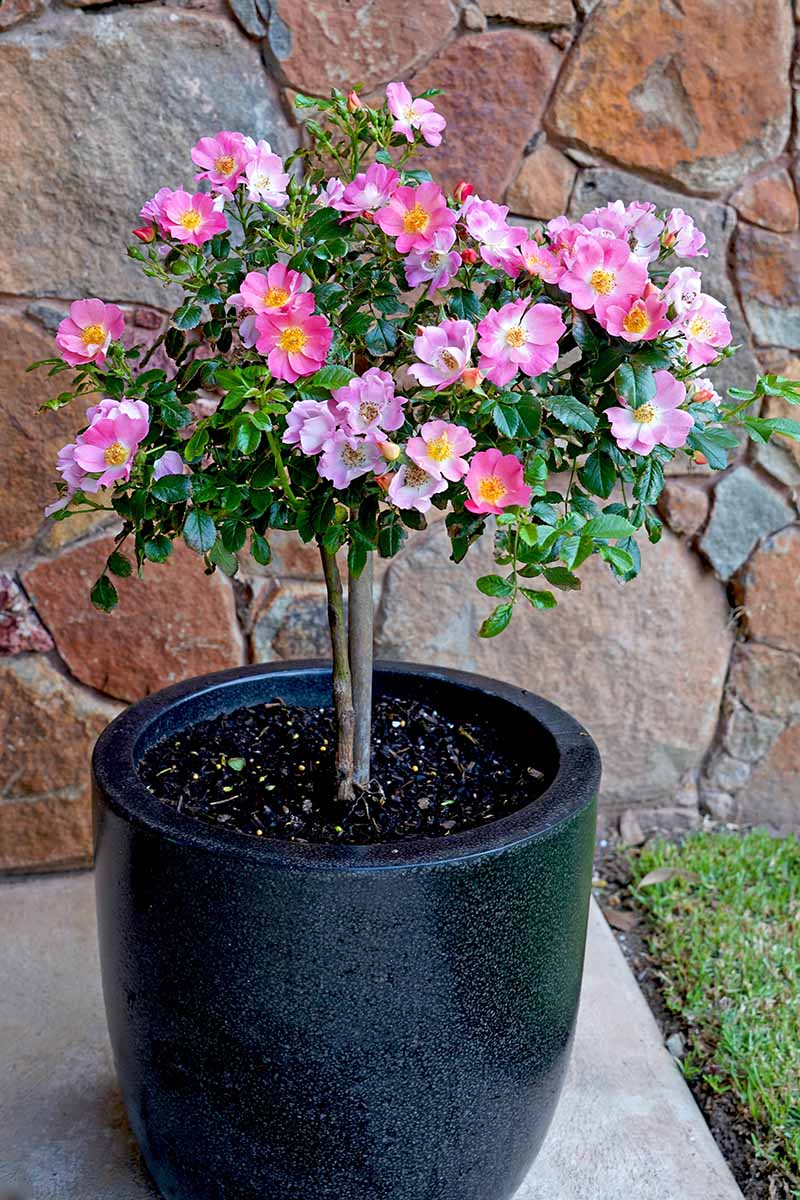
Miniatures can come in climbing or shrub types, and there are moss, teas, and China roses among these. China is the species parent from which all minis descended.
The one commonality here is that they’re much smaller overall, with petite flowers and foliage. The blossoms are generally less full than those found on larger plants.
Their compact nature makes them popular container plants.
Sequoia Nurseries founder Ralph Moore is considered the granddaddy of miniatures and he is sometimes called the “David Austin of miniature roses.”
He has bred over 300 different hybrids, and won dozens of awards from both the ARS and rose societies across the United States and abroad.
There are 16 miniatures that have been inducted into the ARS Hall of Fame to date, and six of them are his.
You can find plants in this category in public and private gardens across the globe. A miniature called ‘Overnight Scentsation’ has even been to space.
What Is a Miniflora?
Minifloras were first bred and released commercially in 1973. They are a hybrid cross of miniature and standard types.
According to the ARS, a miniflora is a plant that falls between floribunda and miniature in size, with leaf and blossom structures falling between the two in size as well.
Some of the original ones were bred by respected hybridizers Dee Bennett of California and Herb Zipper.

In 1982, Star Roses released a Myland series called Sunblazes under the label “mini-flora.”
These plants are still around and are popular today throughout Europe though less common in the US. They reach about 18 inches high with large blossoms.
Minifloras were trademarked by the well-known Maryland breeder J. Benjamin Williams, and the label was written as “mini-flora.”
Williams generously donated the trademark to the American Rose Society in 1999. In 2009, the styling was changed to be written as one word, “miniflora.”
Minifloras usually have flowers that are every bit as large as those found on many standard-sized shrubs. Under the right conditions, the blossoms grow up to three inches in diameter.
The plants themselves can sometimes reach up to five feet tall and may still be considered minifloras if the breeder registers them as such.
They come in all of the colors that you may see in standard roses, and every flower size from single to very full.
Where Do Patio and Micromini Types Fit In?
You might hear the term “patio” used to refer to small roses.
Patio isn’t an official classification, but rather, a general grouping of plants that are about the right size for growing in pots on patios.
These might include minifloras as well as miniatures, and small polyanthas, floribundas, or hybrid teas.
Similarly, micromini isn’t an official classification. These are plants that are extremely small, usually under 12 inches tall, with proportionally tiny blossoms.
You’ll often see these sold as houseplants in grocery stores and nurseries. But remember, roses don’t make good houseplants.
Varieties to Select
It’s an impossible task to try to narrow down the best roses in any category.
Some people are willing to put up with a delicate plant in exchange for stunning flowers. Others wouldn’t dream of planting a shrub that needs regular deadheading to bloom.
That said, the following have been proven to combine beauty, adaptability, and disease resistance.
All of the ones mentioned below are technically classified as minis or minifloras except for one. We’ll go into more detail:
Acadia
Bred by L. Pernille and Mogens Nyegaard Olesen of Fredensborg, Denmark, ‘Acadia’ has beautiful full, apricot and pink blend blossoms with a pungent wild rose fragrance.
This miniflora tops out at a mere three feet, though it often stays much shorter.
Grow this member of the beloved National Parks series in Zones 6 to 9.
Be My Baby
She’s petite, but her impact isn’t. The 28-inch shrub is covered in deep pink, very double blossoms in large clusters that return in flushes throughout the growing season.
It’s classified as a miniature.
Grab a live plant in a #2 container at Nature Hills Nursery for growing in Zones 5 to 10.
Drift
Plants in the Drift® series stay under about 18 inches tall and spread a bit wider.
They are technically classified by the ARS as shrub types, which is sort of a catch-all category that many growers choose.
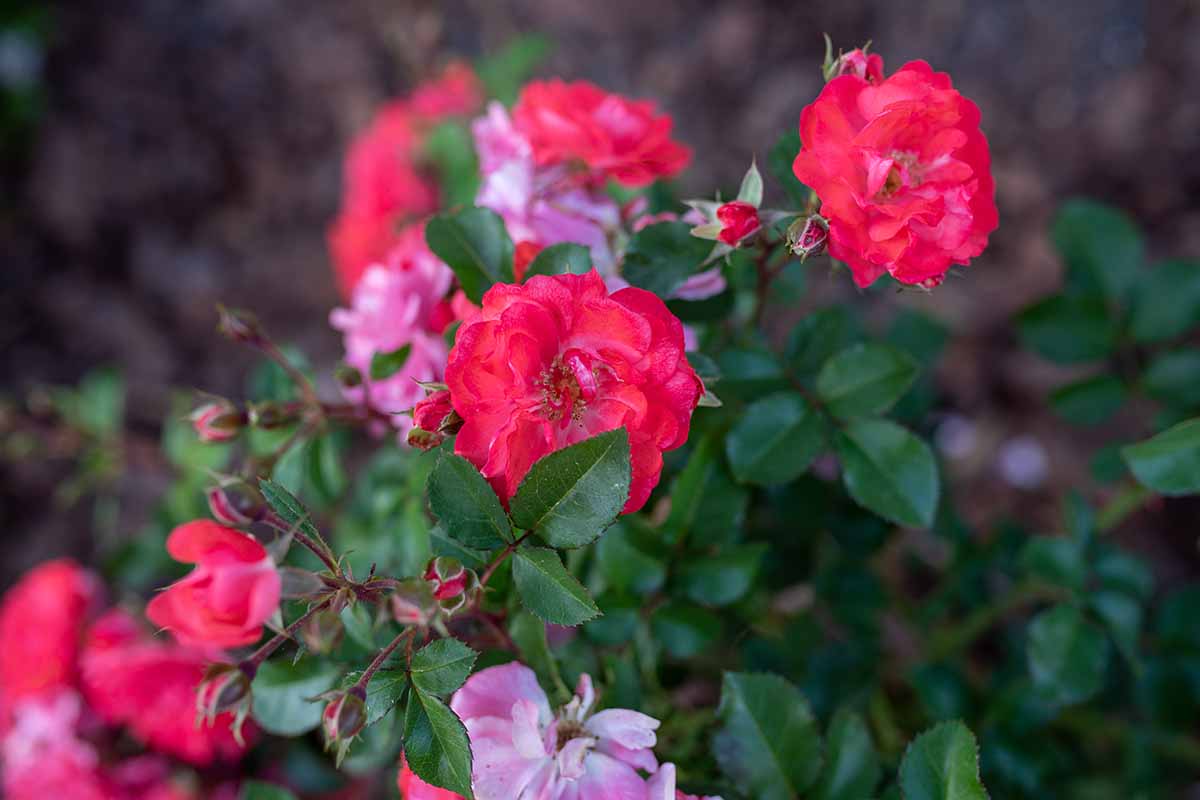
Drifts are often referred to as ground covers, which isn’t an official classification.
See? I told you classification can be confusing! But we’re figuring it out, right?
Because these are hybrids between a mini and a floribunda, they could be called minifloras. But the breeder did not specifically choose to define them this way.
At any rate, if you’re looking for a miniflora, they fit the bill, regardless of their official classification. What’s in a name, anyway?
Peach Drift®, aka ‘Meijocos’ is my favorite of the Drift family. It grows about 18 inches tall and twice as wide in Zones 4 to 11 and has peachy-pink double blossoms with orange centers.
Let this one fill up a spot in your garden by purchasing a plant at Fast Growing Trees in a two- or three-gallon container.
Want something a little more classic? Red Drift® is the same size as Peach Drift® but with masses of deep red blossoms.
It’s hardy in Zones 5 to 10, and you can find three-gallon live plants at Perfect Plants Nursery.
Joy
If there’s an award out there, you can bet ‘Joy’ has won it. This is the top-rated commercially available rose classified by the ARS as a miniature on the market.
A hybrid of ‘Silverhill’ and ‘Kristin,’ it features multi-hued pink and white, fully double blossoms.
One of the things that makes ‘Joy’ so exceptional is that the flowers hold for an extremely long time.
In fact, they will practically dry on the bush in the perfect shape rather than fully opening and falling. You can keep them for weeks in a refrigerator and almost as long in a vase on the counter.
‘Joy’ typically stays around three feet in height, but it can reach four feet tall in ideal conditions. It’s also exceptionally disease resistant.
Overnight Scentsation
Behold the flower that went into space. A cross between the floribunda ‘Taxi’ and the miniature ‘Lavender Jade,’ NASA used this shrub to explore the way that fragrance compounds are impacted outside of the Earth’s atmosphere.
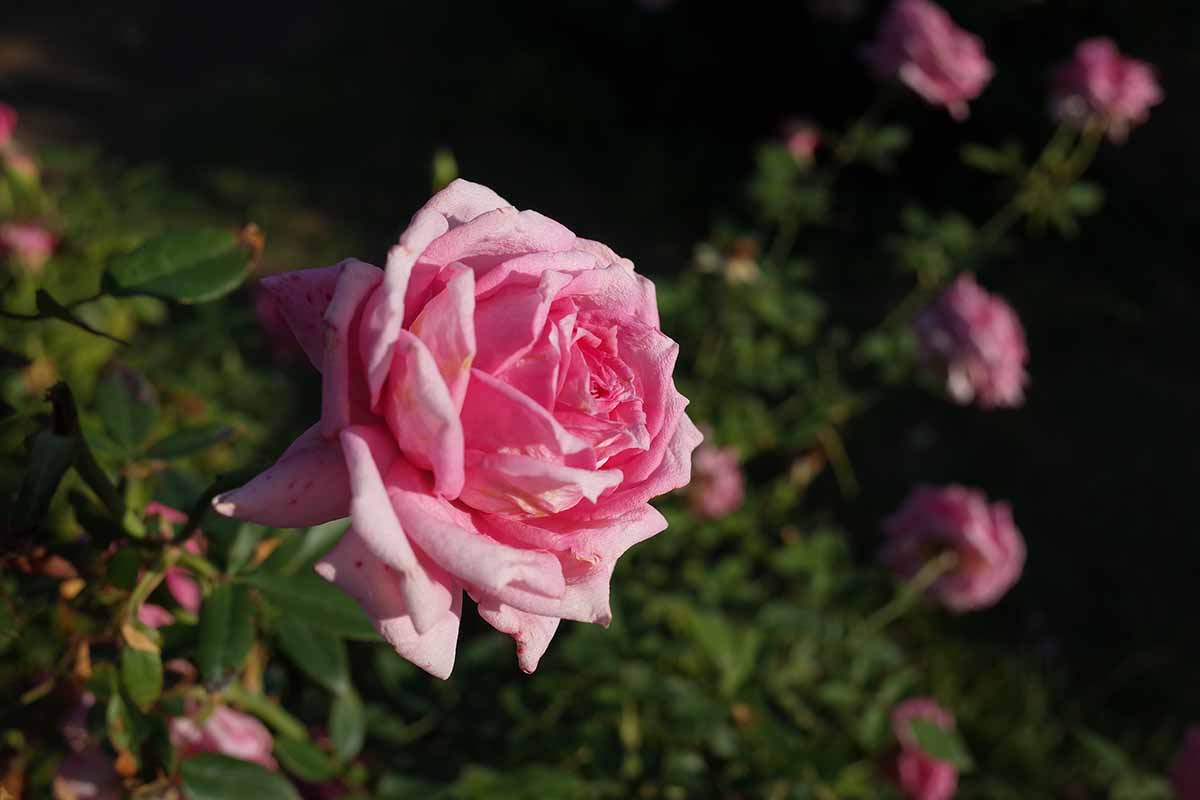
If you lament the lack of scent with other minis, this one will be a joy to have around. It is extremely fragrant with a floral scent.
This cultivar was originally classified as a mini because the miniflora class didn’t exist yet, but it has since been reclassified as a miniflora by the ARS.
A Big Performance in a Tiny Package
Regardless of what you call them, these tiny roses pack a lot into a small package. You get all the joy of rose growing in a much smaller footprint.
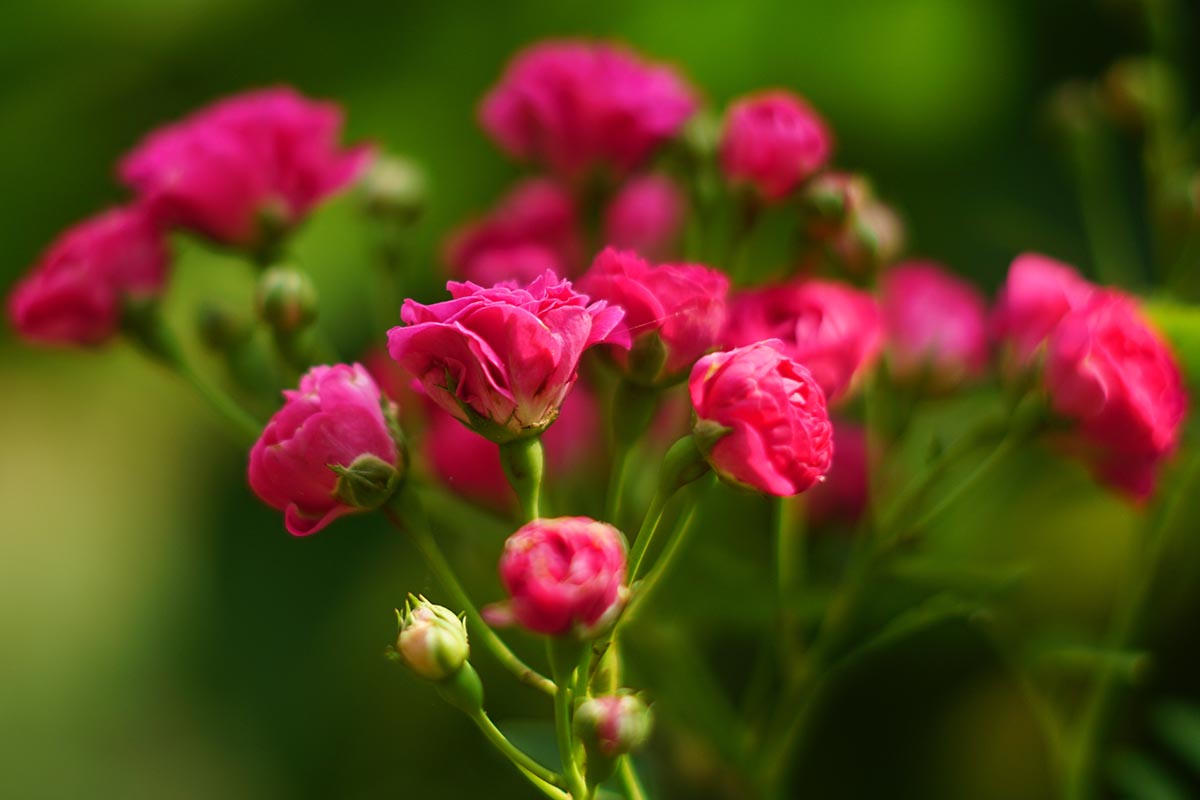
What’s your favorite petite option? Did we include it here, or did we miss the one that’s closest to your heart? Let us know in the comments.
You probably know that there’s a whole lot more to rose growing than we’ve covered here.
If you want to go down the rabbit hole on your way to becoming a rosarian, you might be interested in a few of our other guides, starting with:
